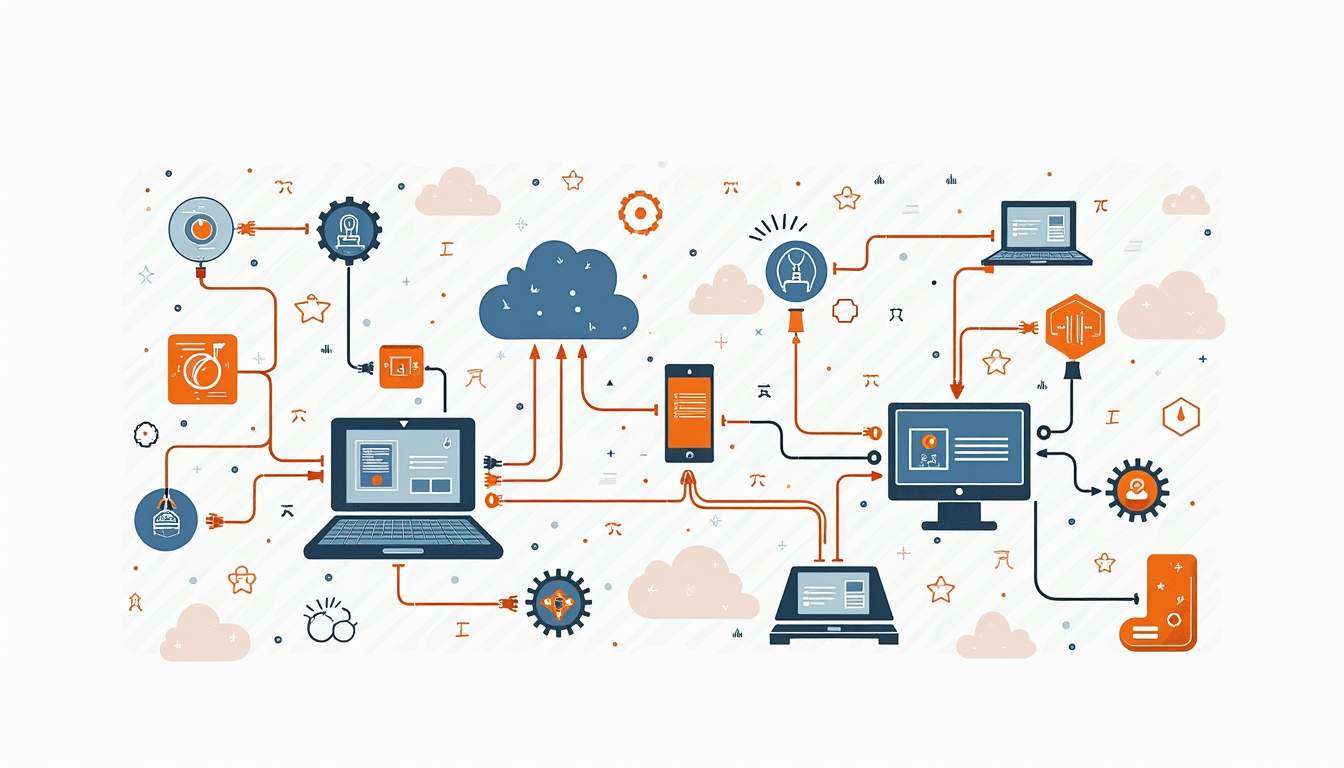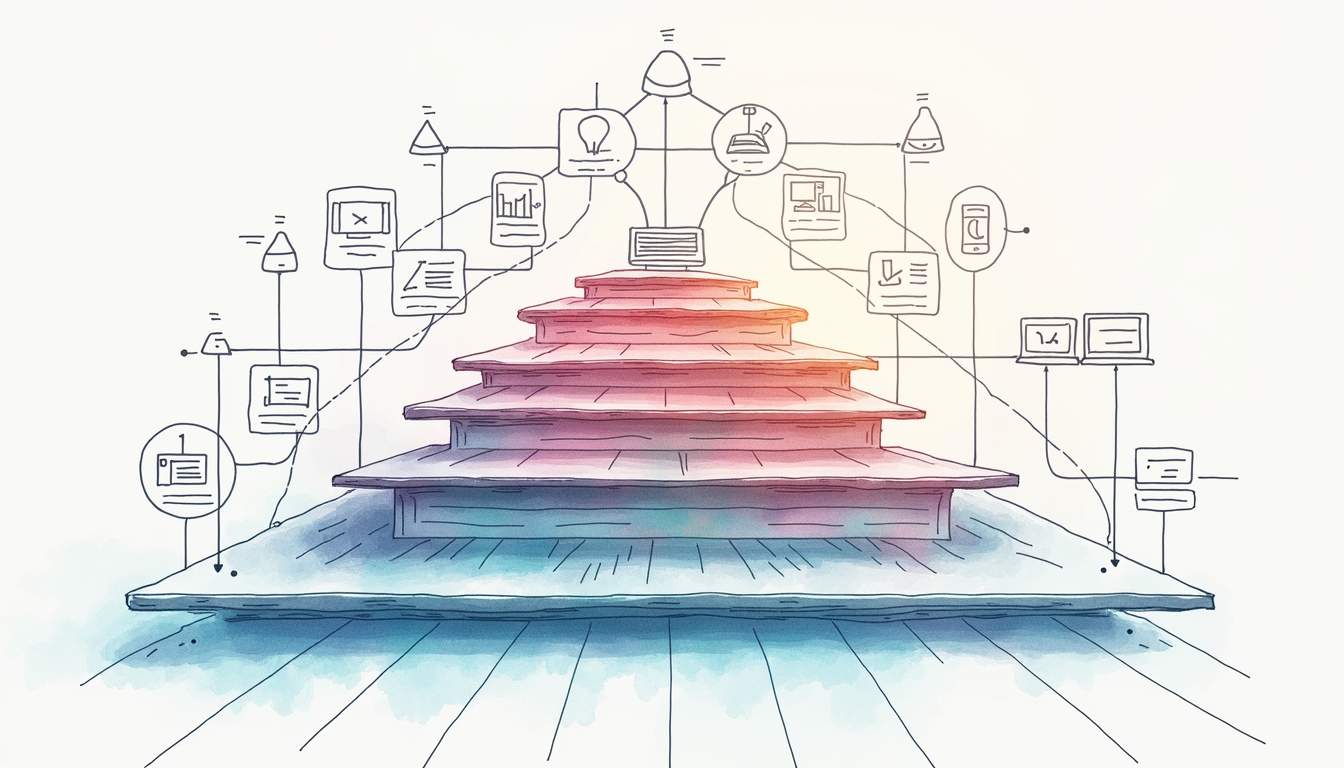The Cyber-Physical Systems (CPS) framework represents a significant evolution in how technology interacts with physical processes. As industries increasingly adopt smart technologies, understanding the CPS framework in relation to existing standards and activities becomes crucial. This article explores the CPS framework, its key components, and its relationship with other relevant standards and initiatives.
Understanding Cyber-Physical Systems
Cyber-Physical Systems are integrations of computation, networking, and physical processes. They encompass a wide range of applications, from smart grids and autonomous vehicles to advanced manufacturing systems. The essence of CPS lies in its ability to connect the digital and physical worlds, allowing for real-time data exchange and control.

Key Components of CPS
At the core of any CPS are several key components that work together to create a cohesive system. These components include sensors, actuators, communication networks, and data processing units. Sensors gather data from the physical environment, while actuators perform actions based on processed information. Communication networks facilitate the exchange of data between these components, enabling seamless interaction.
Data processing units, often powered by advanced algorithms and machine learning, analyze the information collected by sensors. This analysis allows for informed decision-making and enhances the overall functionality of the system. Together, these components form a robust framework that supports the dynamic nature of CPS. Furthermore, the integration of cloud computing and edge computing technologies has significantly improved the efficiency and scalability of CPS, allowing for more complex data processing and analysis closer to the source of data generation. This shift not only reduces latency but also enhances the system’s ability to respond to real-time events, making CPS even more effective in critical applications.
Applications of CPS
The applications of Cyber-Physical Systems are vast and varied. In the healthcare sector, CPS can monitor patient health in real-time, providing critical data to healthcare professionals. In manufacturing, CPS enables smart factories where machines communicate and collaborate to optimize production processes. Transportation systems also benefit from CPS, as autonomous vehicles rely on real-time data to navigate safely.
Moreover, the integration of CPS in smart cities enhances urban living by improving traffic management, energy efficiency, and public safety. The potential for CPS to transform industries is immense, making it a focal point for researchers, policymakers, and businesses alike. For instance, in agriculture, CPS can be employed to create precision farming systems that utilize soil sensors and weather data to optimize irrigation and fertilization, significantly increasing crop yields while minimizing resource waste. Similarly, in the energy sector, smart grids equipped with CPS can dynamically balance supply and demand, integrating renewable energy sources more effectively and contributing to a more sustainable future.
Standards Supporting CPS Development
The growth of Cyber-Physical Systems has prompted the establishment of various standards that guide their development and implementation. These standards ensure interoperability, safety, and security across different systems and applications.

ISO/IEC Standards
The International Organization for Standardization (ISO) and the International Electrotechnical Commission (IEC) have developed several standards relevant to CPS. For instance, ISO/IEC 62264 focuses on the integration of enterprise and control systems, providing a framework for aligning business processes with operational activities. This standard is crucial for industries looking to implement CPS effectively.
Another important standard is ISO/IEC 27001, which addresses information security management systems. As CPS often involves sensitive data, ensuring robust security measures is paramount. Compliance with such standards helps organizations mitigate risks associated with data breaches and cyber threats. Furthermore, ISO/IEC 27001 promotes a culture of continuous improvement in security practices, encouraging organizations to regularly assess and enhance their security protocols to adapt to evolving threats.
IEEE Standards
The Institute of Electrical and Electronics Engineers (IEEE) has also contributed significantly to the development of standards for CPS. IEEE 2030 provides a framework for smart grid interoperability, ensuring that various components of the smart grid can communicate effectively. This standard is vital for the successful implementation of CPS in energy systems.
Additionally, IEEE 802.15.4 is a standard for low-rate wireless personal area networks, which plays a crucial role in enabling communication among devices in a CPS. By establishing these standards, the IEEE facilitates the seamless integration of various technologies within CPS. Moreover, IEEE standards often include guidelines for testing and certification, which help manufacturers demonstrate compliance and reliability of their products in real-world applications. This not only boosts consumer confidence but also fosters innovation by providing a clear pathway for new technologies to enter the market.
Regulatory Frameworks and Initiatives
Beyond technical standards, regulatory frameworks and initiatives play a vital role in shaping the landscape of Cyber-Physical Systems. Governments and organizations worldwide are recognizing the importance of establishing guidelines that promote safe and effective CPS deployment.

Government Regulations
Many countries have begun to develop regulations that specifically address the challenges posed by CPS. For example, the European Union’s General Data Protection Regulation (GDPR) impacts how data is collected and processed within CPS. Compliance with such regulations is essential for organizations to maintain public trust and avoid legal repercussions. Additionally, the GDPR emphasizes the need for transparency in data handling practices, which is crucial in environments where personal and sensitive data may be processed by interconnected systems.
In the United States, the National Institute of Standards and Technology (NIST) has been actively involved in developing frameworks to guide the implementation of CPS. The NIST Cybersecurity Framework provides organizations with a structured approach to managing cybersecurity risks associated with CPS. This framework not only outlines best practices for risk management but also encourages organizations to adopt a continuous improvement mindset, ensuring that their cybersecurity measures evolve alongside the rapidly changing technological landscape.
Industry Initiatives
Various industry initiatives are also emerging to support the development of CPS. Collaborative efforts between academia, industry, and government entities are essential for fostering innovation and addressing common challenges. For instance, the Industrial Internet Consortium (IIC) promotes best practices for the deployment of Internet of Things (IoT) technologies, which are often integral to CPS. Through its extensive network of members, the IIC facilitates knowledge sharing and collaboration, enabling organizations to leverage collective expertise in tackling complex CPS-related issues.
Moreover, initiatives like the Smart Manufacturing Leadership Coalition (SMLC) aim to advance smart manufacturing practices by establishing guidelines and frameworks that facilitate the adoption of CPS in manufacturing environments. Such collaborative efforts are crucial for driving the adoption of CPS across different sectors. The SMLC not only focuses on technological advancements but also emphasizes workforce development, ensuring that employees are equipped with the necessary skills to operate and maintain these sophisticated systems. By addressing both technology and human factors, these initiatives foster a holistic approach to CPS integration, paving the way for more resilient and efficient operational practices.
Challenges in CPS Implementation
Despite the numerous benefits of Cyber-Physical Systems, their implementation is not without challenges. Organizations must navigate a complex landscape of technical, regulatory, and organizational hurdles to successfully deploy CPS.
Interoperability Issues
One of the primary challenges in CPS implementation is ensuring interoperability among various components and systems. As CPS often involve multiple devices from different manufacturers, achieving seamless communication can be difficult. The lack of standardized protocols can lead to compatibility issues, hindering the overall performance of the system.
To address this, stakeholders must collaborate to develop common standards and protocols that facilitate interoperability. This requires a concerted effort from industry leaders, standards organizations, and regulatory bodies to create a unified framework that supports the diverse ecosystem of CPS.
Security Concerns
Security is another significant concern when it comes to Cyber-Physical Systems. As these systems become increasingly interconnected, they become more vulnerable to cyberattacks. The potential consequences of a security breach in a CPS can be dire, ranging from financial losses to threats to public safety.
Organizations must prioritize cybersecurity measures throughout the lifecycle of CPS. This includes implementing robust security protocols, conducting regular vulnerability assessments, and ensuring that all components are regularly updated to protect against emerging threats.
Future Directions for CPS
The future of Cyber-Physical Systems is promising, with ongoing advancements in technology and an increasing focus on sustainability and efficiency. As industries continue to evolve, the role of CPS will become even more critical in driving innovation and improving operational performance.
Integration with Artificial Intelligence
One of the most exciting developments in the CPS landscape is the integration of artificial intelligence (AI). AI algorithms can enhance the decision-making capabilities of CPS by analyzing vast amounts of data in real-time. This integration allows for more intelligent and adaptive systems that can respond to changing conditions and optimize performance.
For instance, in smart manufacturing, AI can predict equipment failures before they occur, enabling proactive maintenance and reducing downtime. Similarly, in smart cities, AI can analyze traffic patterns to optimize traffic flow and reduce congestion. The potential applications are vast, and as AI technology continues to advance, its integration with CPS will likely lead to transformative changes across various sectors.
Sustainability and Environmental Impact
As the world grapples with climate change and environmental challenges, the role of CPS in promoting sustainability is becoming increasingly important. CPS can optimize resource usage, reduce waste, and enhance energy efficiency in various applications.
For example, in agriculture, CPS can enable precision farming techniques that minimize water and fertilizer usage while maximizing crop yields. In energy systems, CPS can facilitate the integration of renewable energy sources, improving grid stability and reducing reliance on fossil fuels. By leveraging CPS, industries can contribute to a more sustainable future while maintaining operational efficiency.
Conclusion
The Cyber-Physical Systems framework represents a significant shift in how technology interacts with the physical world. Understanding its context within related standards and activities is essential for organizations looking to harness its potential. The establishment of robust standards, regulatory frameworks, and industry initiatives will play a crucial role in guiding the development and implementation of CPS.
Despite the challenges associated with interoperability and security, the future of CPS is bright. With ongoing advancements in technology, particularly in artificial intelligence and sustainability, CPS will continue to drive innovation and transform industries. As organizations navigate this complex landscape, collaboration and adherence to established standards will be key to unlocking the full potential of Cyber-Physical Systems.
Take Control of Your Cyber-Physical Systems with Cybersort
As you consider the integration and optimization of Cyber-Physical Systems within your organization, the importance of visibility and control over your digital infrastructure cannot be overstated. Cybersort offers a tailored solution that structures and safeguards the very backbone of your CPS framework. By enabling stronger cybersecurity and facilitating effective digital transformation, Cybersort ensures your operations are not only safer but also primed for future innovation. Ready to elevate your CPS strategy? Book a discovery call with Cybersort today and take the first step towards a more secure and efficient digital ecosystem.


